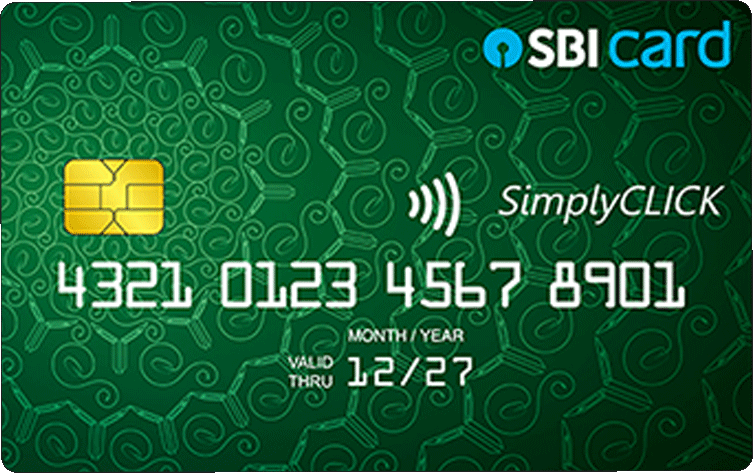
Credit Cards for Bad Credit: What to Look For?
When looking for credit cards designed for bad credit, the main focus should be on rebuilding your credit history rather than rewards or perks. Secured cards are usually the best choice since they require a refundable deposit that acts as your credit limit and help reduce risk for lenders. It’s important to pick cards that report to all three major credit bureaus so your timely payments count toward improving your score. Also, consider fees carefully—opt for cards with low or no annual fees and avoid hidden charges. Finally, look for options that offer an upgrade path to unsecured cards once your credit gets better.
Purpose of Credit Cards for Bad Credit
Credit cards for bad credit are mainly designed to help people rebuild or establish their credit history rather than to increase their spending power. These cards typically offer fewer perks and rewards compared to prime credit cards because their primary focus is on encouraging responsible use that reflects positively on credit reports. By using these cards to make regular, on-time payments, users can demonstrate creditworthiness, which gradually opens doors to mainstream credit products with better terms. Over time, this responsible behavior helps improve credit scores, allowing cardholders to transition to unsecured or more rewarding credit cards. Additionally, these cards serve as practical tools for managing finances and tracking credit progress, while also reducing the need to rely on high-interest loans or payday lenders. Essentially, they act as stepping stones for those looking to improve their financial standing and regain access to better credit options in the future.
Types of Credit Cards for Bad Credit
When looking for credit cards suitable for bad credit, the two main types are secured and unsecured cards. Secured credit cards require a refundable cash deposit, usually between $200 and $300, which typically matches the credit limit. This deposit acts as collateral, lowering the risk for the issuer and making approval easier even with poor credit. Some secured cards offer flexibility by allowing deposits to be paid in installments or accepting lower minimum amounts, making them more accessible. On the other hand, unsecured credit cards do not require any deposit but are less common for bad credit holders and often come with higher fees and interest rates to cover the issuer’s risk. While unsecured cards might seem appealing, their costly fees and limited availability mean they are generally not the best choice for rebuilding credit. It’s important to avoid confusing prepaid cards or store cards with credit cards: prepaid cards do not build credit since they do not report to credit bureaus, and store cards, although sometimes easier to get, usually have limited use and may not report to all three major credit bureaus. For credit rebuilding, choosing a card—secured or unsecured—that reports to all three bureaus (Equifax, Experian, and TransUnion) is crucial to ensure your responsible usage positively impacts your credit score.
Eligibility Criteria for Bad Credit Cards
Credit cards designed for bad credit typically target consumers with credit scores below 630, but some options also welcome applicants with no credit history at all. Many issuers offer pre-approval tools that let you check your chances of qualifying without a hard credit inquiry, helping you avoid unnecessary hits to your credit score. For those with severely damaged credit, secured cards that require no credit check are a strong choice since they mainly rely on the security deposit to reduce issuer risk. Standard requirements across most cards include being at least 18 years old and providing proof of income to demonstrate repayment ability. Applicants usually need a Social Security Number or Individual Taxpayer Identification Number, and some cards also require a U.S. residential address and an active bank account. The minimum deposit varies widely depending on the issuer and card product; some secured cards allow flexible deposits or installment payments to ease the upfront cost. While length and recent activity in your credit history can influence approval chances, certain issuers also take alternative data into account, such as employment status, to get a fuller picture of your financial situation. Understanding these criteria can help you find a card that matches your profile and sets you on the right path to rebuilding credit.
Credit Bureau Reporting and Its Impact
When choosing a credit card for bad credit, one of the most important factors is whether the card reports your activity to all three major credit bureaus: Equifax, Experian, and TransUnion. Reporting to these bureaus is essential because it allows your responsible credit behavior, like on-time payments and low balances, to be reflected in your credit reports and ultimately improve your credit score. If a card only reports to one or two bureaus, or doesn’t report regularly, you might not see the full benefit of your credit-building efforts.
Regular reporting of on-time payments shows lenders that you are managing credit responsibly, which can steadily boost your credit score over time. However, keep in mind that late payments, especially those 30 days or more past due, will also be reported and can significantly lower your credit rating. This makes it crucial to pay at least the minimum amount due on time every month.
Credit utilization, which is the ratio of your credit card balance to your credit limit, is another key factor reported to the bureaus. Keeping your utilization below 30% signals to lenders that you are not overextended, helping your score. Some cards report monthly, but others might report less frequently, so understanding the reporting schedule can help you plan payments strategically.
Not all cards report to all three bureaus equally, and some may only report positive information or only report negative information, which can affect your credit history unfairly. If you notice inaccuracies on your reports, disputing these errors can help correct your credit record and improve your score. Without consistent and comprehensive reporting, even responsible card usage won’t help rebuild your credit, so selecting a card with reliable credit bureau reporting is essential for anyone looking to improve their credit over time.
Common Fees to Watch Out For
When choosing a credit card for bad credit, it’s important to carefully review the fees, as they can add up quickly. Annual fees on these cards can range from no charge to more than $50, so finding a card with a low or no annual fee can save you money. Some cards add monthly maintenance or service fees, which increase your cost even if you don’t use the card heavily. Application fees are rare but still possible, especially on secured cards, so watch for those before applying. High interest rates (APR) are common with bad credit cards, meaning carrying a balance can become expensive. Late payment fees typically fall between $25 and $40, so making payments on time is crucial to avoid extra charges. Cash advances come with their own fees and usually higher APRs, making cash withdrawals from your credit card costly. Some issuers may also charge fees for credit limit increases, so check if this applies before requesting more credit. If you travel abroad, foreign transaction fees can add up, often around 3%, making purchases outside the U.S. more expensive. Inactivity fees can be charged if you don’t use your card regularly, so occasional use is a good idea to avoid this. Lastly, hidden fees may be buried in the fine print, so reading the terms carefully before signing up is essential to avoid surprises.
Security Deposits Explained
Security deposits are a key feature of secured credit cards, designed to protect the card issuer by reducing their risk. Typically, the deposit amount matches the credit limit you receive on the card. For example, if you put down $300 as a deposit, your credit limit will usually be $300. This deposit acts as collateral, which means if you fail to make payments, the issuer can use the deposit to cover losses. The deposit is refundable, but only if you close the account in good standing or upgrade to an unsecured card. Some issuers allow you to pay the deposit in installments or split it over time, which can make it easier to manage. Often, the deposit is held in a separate savings or escrow account, but it does not earn interest for you. If you don’t pay the deposit, you generally won’t get a credit limit or be approved for the card. Deposit amounts vary widely, from as low as $49 to several hundred dollars depending on the card. When you close your account or upgrade, the timing of the deposit refund depends on the issuer’s policies, so it may take a few weeks to get your money back. Understanding how security deposits work can help you choose the right secured card and manage your credit-building journey with more confidence.
Using Credit Cards to Improve Credit
Using a credit card responsibly is one of the most effective ways to rebuild or improve your credit score, especially if you start with bad credit. The key is to make payments on time every month, as timely payments build a positive payment history, which lenders value highly. Paying your balance in full each month not only avoids costly interest charges but also shows that you manage your credit well. Another important factor is keeping your credit utilization rate below 30% of your credit limit. For example, if your card has a $300 limit, try to keep your balance under $90 to avoid signaling financial stress to creditors. Using your card regularly is also important. Cards can be closed by issuers after long periods of inactivity, which can hurt your credit by reducing your available credit and shortening your credit history. At the same time, avoid applying for multiple new credit cards or loans in a short period, as each application triggers a hard inquiry that can temporarily lower your score. Monitoring your credit reports is crucial; check for errors and dispute any inaccuracies promptly to ensure your credit reflects your true financial behavior. Maintaining older credit accounts can lengthen your credit history, which benefits your score. Setting reminders or enabling automatic payments helps prevent missed due dates, which can severely damage your credit. With consistent responsible use over six to twelve months, you can see measurable improvements in your credit profile, allowing you to qualify for better credit products in the future.
When and How to Upgrade Your Card?
Upgrading your credit card after rebuilding your credit can be a smart move, but timing and understanding the process matter. Generally, you should consider an upgrade once you’ve made consistent on-time payments and see a clear improvement in your credit score. Many card issuers offer unsecured cards as an upgrade option without closing your existing secured account. This approach preserves your credit history and avoids opening a new account, which can trigger a hard credit inquiry and temporarily lower your score.
Upgraded cards often come with better credit limits and lower fees, and in some cases, the upgrade can eliminate the need for a security deposit altogether. Some issuers automatically review accounts for upgrade eligibility, so you might get an offer without applying. However, keep in mind that sign-up bonuses typically are not offered when you upgrade because you’re not opening a new account.
Before accepting any upgrade offer, review the terms carefully. Check for changes in interest rates, fees, or credit limits. Also consider timing your upgrade to avoid unnecessary hard credit pulls; some issuers allow upgrades without a credit check, while others may require one.
If your current issuer doesn’t offer an upgrade, you can apply for a new card with better terms. Do this cautiously, as applying for new credit can impact your credit score. Always weigh the benefits of a new card against the potential downsides, and try to keep your older accounts open to maintain your credit history and utilization ratio.
Top Credit Cards for Bad Credit in 2025
When rebuilding credit in 2025, choosing the right card is key. Current Build Card stands out with no credit check or deposit required, earning points on purchases and no APR, making it a simple way to start building credit without extra costs. Capital One Quicksilver Secured offers 1.5% cash back on all purchases plus a 5% bonus on travel, and it provides an upgrade path after six months, helping you move to better cards once your credit improves. Discover it Secured is another solid choice, with rewards on gas and restaurants, plus automatic reviews for upgrading to an unsecured card. For those needing flexibility on deposits, Capital One Platinum Secured allows low deposits starting at $49 with installment options and possible credit line increases over time. OpenSky Secured Visa requires no credit check but charges a $35 annual fee, which might be a downside, while its sibling, OpenSky Plus Secured Visa, removes the annual fee but comes with a higher APR and still no credit check, offering options depending on your tolerance for fees and interest. International students or immigrants may find Firstcard Secured Credit Builder useful; it requires no Social Security number but has a subscription fee and offers up to 15% merchant cashback on purchases. Chime Secured Credit Builder requires no deposit, linking to your Chime checking account and reporting to credit bureaus, which is helpful for those who want a straightforward, no-deposit option. The Secured Self Visa avoids hard credit checks and offers upgrade paths with low deposits, giving more flexibility. Grow Credit Mastercard is unique because it builds credit through subscription payments, which suits users who want to leverage regular bills rather than spending on a credit card. Selecting from these options depends on your priorities: whether it is no credit check, rewards, fees, or upgrade potential. Always consider how the card fits your financial situation and credit rebuilding goals.
Common Misconceptions About Bad Credit Cards
Many people believe that all credit cards for bad credit come with high fees, but that’s not always true. Some cards are fee-free or have very low costs, so it pays to shop around. Another common myth is that you need to carry a balance to build credit. In reality, paying your balance in full and on time is the best way to improve your credit score without incurring interest. Some also think joint credit scores exist, but credit scores are individual, based only on your own credit history. Building credit with a card isn’t complicated either; consistent, responsible use like making timely payments and keeping balances low is enough. It’s important to know that prepaid cards don’t help your credit score since they don’t report to credit bureaus. Many secured cards don’t require a credit check, making them accessible even if your credit is poor. Also, some secured cards offer rewards, so you can earn benefits while rebuilding credit. Closing old credit cards might seem like a good idea, but it can sometimes hurt your credit by reducing your overall available credit and shortening your credit history. Lastly, applying for multiple cards in a short time can lower your credit score due to multiple hard inquiries. Overall, how you use your card responsibly matters more than the specific type of card when it comes to rebuilding credit.
FAQs About Credit Cards for Bad Credit
What is considered bad credit? Generally, a credit score below 630 or having no credit history at all falls into the bad credit category. Can I get a credit card if my credit is bad? Yes, but most options are secured credit cards requiring a refundable deposit, or some unsecured cards that often come with higher fees and interest rates. What exactly is a secured credit card? It is a card where you put down a cash deposit upfront, usually equal to your credit limit, which reduces the risk for the issuer. Do secured cards report to credit bureaus? The good ones do report your payment activity to all three major bureaus: Equifax, Experian, and TransUnion. This reporting is important because it helps build or improve your credit score when you use the card responsibly. Are unsecured credit cards available for people with bad credit? Yes, but they tend to have much higher fees and interest rates as compensation for the increased risk. What kinds of fees should I expect? Common fees include annual fees, monthly maintenance fees, application fees, and sometimes fees for increasing your credit limit. Do I need to carry a balance to build credit? No, carrying a balance is not necessary; in fact, paying your balance in full and on time every month is the best way to improve your credit. Can I upgrade my secured card to an unsecured card? Some issuers offer upgrade paths where they return your deposit and convert your account to an unsecured card, allowing you to keep your credit history intact. What do I need to apply for a bad credit card? Typically, you must be at least 18 years old, have a Social Security number, provide proof of income, and sometimes have a bank account. Understanding these basics can help you choose the right card and take the correct steps toward rebuilding your credit.
What to Look for When Choosing a Card
When choosing a credit card for bad credit, start by checking the eligibility requirements. Look for cards designed for credit scores below 630 or those that accept applicants with no credit history. Some cards even skip the hard credit check, which can be helpful if your credit is severely damaged. Make sure the card reports to all three major credit bureaus—Equifax, Experian, and TransUnion—so your positive payment behavior actually helps build your credit score.
Fees can add up quickly, so opt for cards with low or no annual fees. Be cautious of hidden charges like monthly maintenance or application fees, which can eat into your budget. If you’re considering a secured card, review the security deposit terms carefully. Deposits often start around $200, but some cards allow you to pay in installments or require a lower deposit. Knowing this can make the card more affordable upfront.
Also, consider whether the card offers an upgrade path to an unsecured card without closing your account. This feature helps preserve your credit history and means you can eventually move on to better options without starting over. Credit limit flexibility is another plus—cards that allow you to increase your limit by adding funds or through periodic reviews give you room to grow your credit responsibly.



